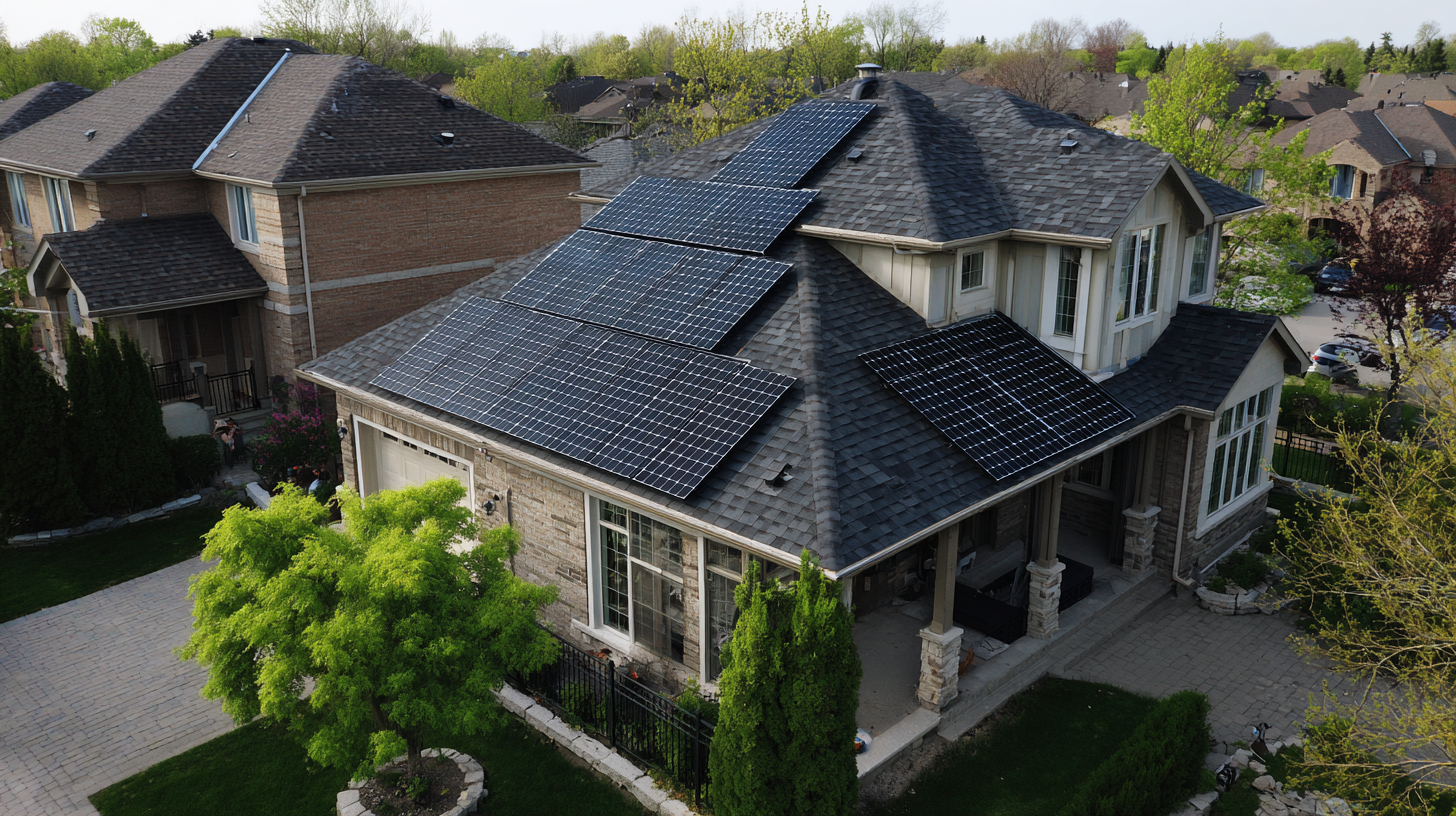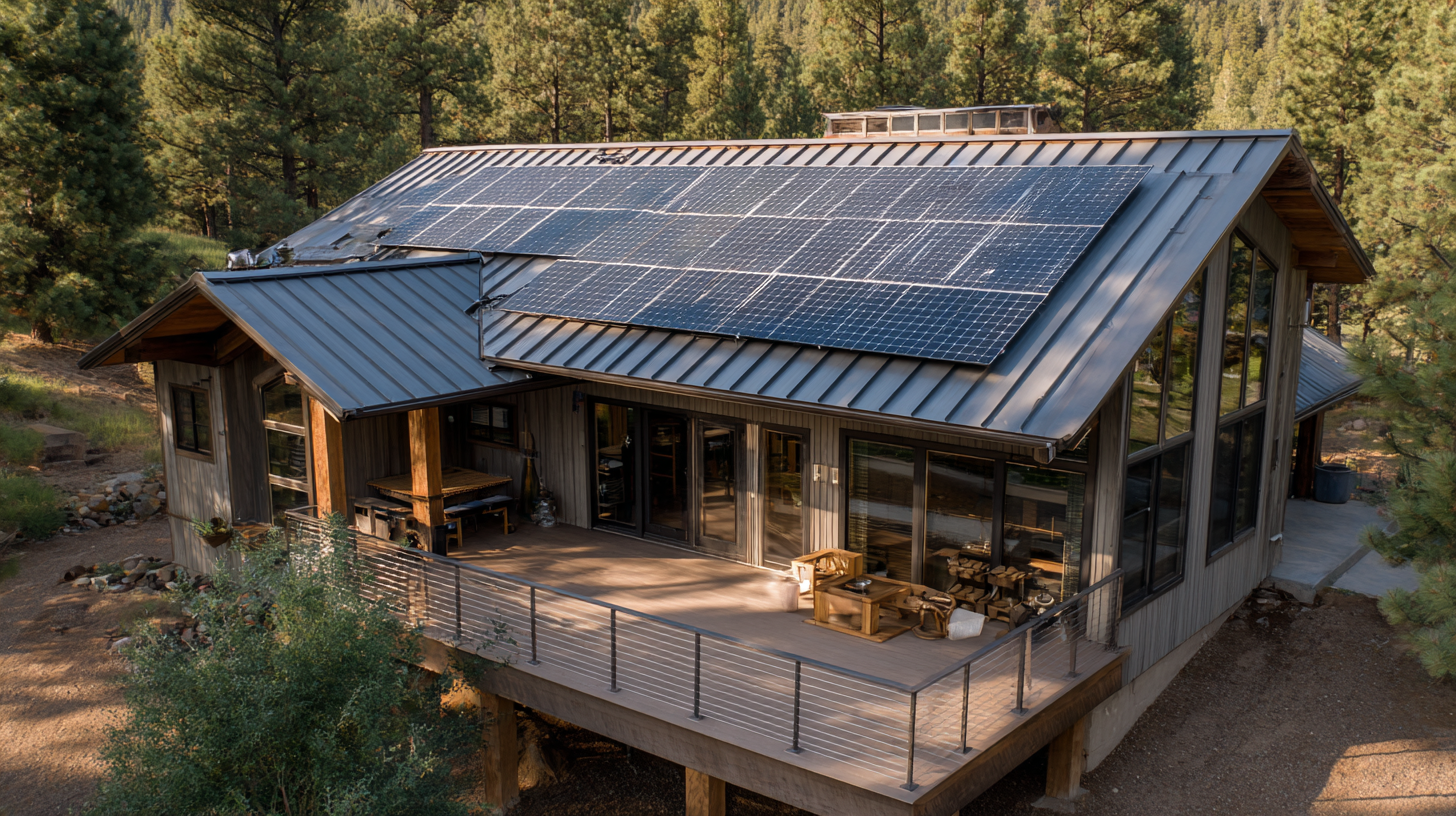MH Energy Your Better Solar and Energy Partner
Leave Your Message
MH Energy Your Better Solar and Energy Partner
In today's pursuit of sustainable energy solutions, maximizing savings through a Grid Tied Solar Power System has become increasingly vital for homeowners and businesses alike. According to the Solar Energy Industries Association (SEIA), the solar market in the U.S. has experienced an impressive growth rate of over 20% annually, with grid-tied systems representing a significant portion of this expansion. These systems not only capitalize on the abundant solar energy but also allow users to benefit from net metering, providing credits for excess energy generated. Furthermore, the Lawrence Berkeley National Laboratory found that homes equipped with solar energy systems often see their property values increase by an average of 4.1%. Given these compelling benefits and the potential for considerable energy savings, adopting a Grid Tied Solar Power System presents an attractive, economically viable option for energy-conscious consumers.

Grid tied solar power systems are designed to harness solar energy while remaining connected to the utility grid. This setup allows homeowners to utilize solar power during the day, reducing their reliance on grid electricity. When solar panels produce more energy than needed, the excess power is fed back into the grid, often resulting in credits through net metering. This process not only lowers electricity bills but also promotes a cleaner energy landscape.
Understanding the components of a grid tied system is crucial for maximizing its benefits. The system typically includes solar panels, an inverter, and a connection to the grid. The inverter plays a vital role, converting the direct current generated by the solar panels into alternating current suitable for household appliances. Additionally, energy monitoring systems can help users track their energy production and consumption patterns, enabling informed decisions on energy use and further savings. By optimizing the use of solar energy while staying connected to the grid, homeowners can achieve significant energy savings and contribute to a sustainable future.
| Dimension | Value |
|---|---|
| Average Annual Energy Consumption (kWh) | 10,000 |
| Solar Panel Capacity (kW) | 5 |
| Estimated Energy Production per Year (kWh) | 6,500 |
| Grid Electricity Rate ($/kWh) | 0.13 |
| Annual Savings from Solar (Estimated) ($) | 845 |
| Payback Period (years) | 6 |
| System Lifespan (years) | 25 |
Assessing your energy needs is a crucial first step in designing an optimal grid-tied solar power system. Begin by analyzing your historical energy usage, which can typically be found in your utility bills. Look for patterns and peak usage times, as this information will guide you in determining the size and capacity of the solar system that will best meet your needs. Consider factors such as the number of occupants in your household, seasonal variations in energy consumption, and any significant electrical loads from appliances or devices.
 Next, evaluate your location and its solar potential. Factors such as roof orientation, shading from trees or nearby buildings, and local climate all affect how much solar energy your system can generate. This can influence not only the size of the system required but also its efficiency. By aligning your energy consumption patterns with the generation capabilities of the solar power system, you can maximize your energy savings while ensuring that your system is both effective and sustainable in the long term. Proper assessment will allow you to design a system that not only meets your current energy needs but anticipates future growth as well.
Next, evaluate your location and its solar potential. Factors such as roof orientation, shading from trees or nearby buildings, and local climate all affect how much solar energy your system can generate. This can influence not only the size of the system required but also its efficiency. By aligning your energy consumption patterns with the generation capabilities of the solar power system, you can maximize your energy savings while ensuring that your system is both effective and sustainable in the long term. Proper assessment will allow you to design a system that not only meets your current energy needs but anticipates future growth as well.
When setting up a grid-tied solar power system, choosing the right components is crucial for maximizing energy savings. Key components include solar panels, inverters, and batteries, all of which should be selected based on their efficiency, durability, and compatibility with your specific energy needs. High-efficiency solar panels, for example, can produce more electricity in a smaller footprint, making them ideal for homes with limited roof space.
Tips: Look for solar panels with a warranty of at least 25 years to ensure longevity. Use microinverters instead of string inverters for better performance, particularly in shaded areas. This approach allows each panel to operate independently, optimizing overall energy production.
In addition to the main components, consider energy monitoring systems and smart home technologies that can help you track energy use and savings. These systems enable you to make informed decisions about energy consumption and identify areas where you can reduce waste.
Tips: Research and invest in a good energy management system that integrates with your solar setup. This can provide real-time data and insights, helping you adapt your energy usage patterns for better efficiency.

Implementing energy efficiency measures alongside a solar installation can significantly enhance the overall performance and savings of a grid-tied solar power system. By integrating energy-efficient appliances and smart home technologies, homeowners can reduce their energy consumption, making better use of the electricity generated by solar panels. This holistic approach not only maximizes the potential benefits of solar energy but also contributes to a more sustainable lifestyle.
For instance, upon installing solar panels, residents can focus on upgrading insulation, switching to LED lighting, and investing in energy-efficient heating and cooling systems. These improvements minimize energy waste, ensuring that the electricity harnessed from solar power is utilized most effectively. Moreover, this synergy between solar power and energy efficiency measures can lead to lower utility bills and a reduced carbon footprint, paving the way for a greener future. The ongoing education and innovation in this field play a vital role in driving such initiatives, empowering homeowners to make informed choices that benefit both their finances and the environment.
This chart illustrates the potential energy savings achieved by implementing energy efficiency measures alongside a grid-tied solar power system. The first bar represents energy savings from efficiency measures, while the second bar represents additional savings from solar energy production.
Effectively monitoring and managing energy production and consumption is crucial for maximizing energy savings with a grid-tied solar power system. Utilizing smart home technology, homeowners can track their solar energy generation in real time, allowing them to understand how much energy is being produced and when. This information is essential for optimizing energy use; for instance, it encourages consumers to shift energy-intensive activities, such as running dishwashers or doing laundry, to peak solar production times, thereby reducing reliance on grid power.
Additionally, implementing energy management systems can enhance efficiency further by allowing for the scheduling and automation of appliances. By integrating these systems with solar panels, users can take advantage of the energy they produce rather than drawing from the grid. Furthermore, keeping an eye on the overall energy consumption patterns can help identify areas where savings can be achieved, such as replacing old appliances with energy-efficient models or adjusting settings to minimize wasted energy. In this way, both the monitoring of production and thoughtful management of consumption create a synergistic effect that leads to significant energy savings and a lower environmental footprint.






